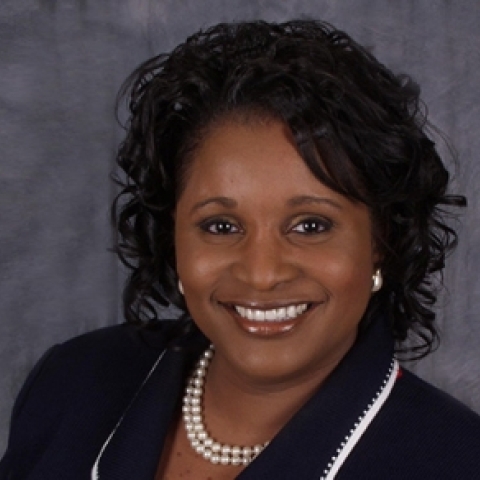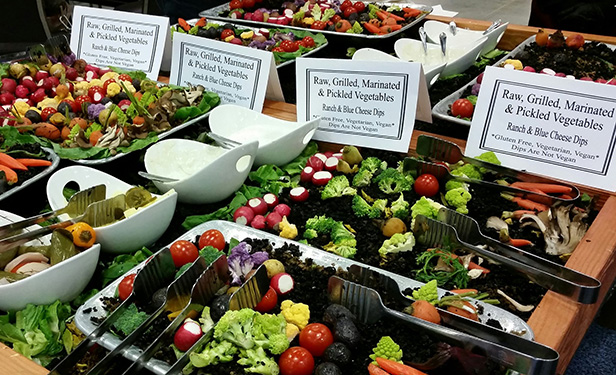Green Interview: Kimberly Smith, Director of Conferences and Events, AASHE

Editor's Note: Earth Day is April 22. To help illustrate how event planners can help move the industry towards a more sustainable future, we are sharing this inspiring TSNN interview with Kimberly Smith, director of conferences and events at the Association for the Advancement of Sustainability in Higher Education (AASHE).
When Kimberly Smith began as director of conferences and events at the Association for the Advancement of Sustainability in Higher Education (AASHE), she already thought she was doing her part to be environmentally conscious, both in her career and personal life. Two years into her role at “the best association” she has ever worked for in her 30-year career, Smith has not only learned the true meaning of producing an authentically green event but also how much power event planners truly have when it comes to pushing the events industry in a more sustainable direction.
I had the chance to sit down with Smith to hear how the association walks the green walk at its AASHE Conference & Expo, how planners can use their RFPs to create positive change, and why she refuses to serve her attendees anything but fresh, healthy foods at the annual conference, set for Oct. 2-5 at the David L. Lawrence Convention Center in Pittsburgh, PA.
Lisa Plummer Savas: When and why did AASHE begin implementing green initiatives at its conference?
Kimberly Smith: Our first gathering in 2006 was relatively small compared to the size of our conference now but we’ve been implementing sustainability since the beginning because it’s part of our title and mission. Over time it’s become a little easier (to do) because there’s more awareness about the need to be more sustainable. Sustainability wasn’t at a forefront of conversation 10 years ago as it is now and even today we don’t have enough professionals who understand the notion and are putting practices in place, but we felt like it’s important for us to demonstrate our commitment to sustainability and want our conference to be a model for others.
Every year we try to find ways to reduce our carbon footprint, such as last year we got enough carbon offsets to reduce every aspect of our meeting so it became carbon neutral. You can never stop improving and we’re always asking, “what else can we do, what can we do differently?”
LPS: Do you maintain strict environmental parameters in your RFPs and how have they helped your conference achieve its green goals?
KS: When I first started with AASHE and did my first RFP, I had all these (stipulations) and as a result, the responses were very limited – they were very minimal to the point where we didn’t have many choices. I learned that you can’t be too strict but you can be clear. I found that the most effective way to advance our goals is to find like-minded companies that share our commitment to advancing sustainability and are interested in doing good in the way that we do good.
The engagement that we have with our partners – convention centers, hoteliers, caterers, A/V, exhibitors, etc. – they have to be consistent with AASHE’s mission and values as well as the special sensitivities of our members. We maintain Principles of Engagement for determining who and how we work with others and give a preference to companies that have policies and practices in place that address their environmental impact and social responsibility, that are transparent in their progress and how they implement them. It helps us achieve our goals because when you understand expectations and capabilities at the onset you minimize conflicts, improve work quality and performance.
LPS: What do you suggest planners do to help push suppliers in a greener direction?
KS: The simplest thing they can start doing is asking in their RFP how suppliers practice the three Rs: how do they reduce, reuse and recycle? They’ll be glad to tell you, you just have to know what’s marketing language and what’s real.
It can be as simple as requiring a digital contracting process. You’d be surprised by how many suppliers still want to send you an email with an attachment and tell you to sign the contract, then you go back and forth, versus using a (digital solution). I’ve gotten contracts in the past month that still have fax numbers on them. We’re not going to print a document, then fax it so more paper comes out on the other side. So, require digital contracting from top to bottom and ask for the meeting planners guide digitally.
Work with a general service contractor that’s committed to reducing waste and understands how to get recyclable carpet and store that for you, and with an A/V company that understands the need to use LED and DLT projection versus LCD, which is cheaper, but will negotiate so it isn’t. Only work with caterers who can provide plant-based meals without extravagant expense. Our food and dining guidelines outlined in our STARS rating system require that purchasing is third-party verified, as well as ethically and sustainably produced.

LPS: How are you able to serve organic, sustainable meals without breaking your food and beverage budget?
LPS: This is something I have a real issue with, that some places want to charge you more just because you want real food – that’s a disgrace and why it’s important to get that information up front. Seeing the catering menu is part of my site selection. I’m not going to choose your venue and discover after I sign the contract that I can get a continental breakfast with bagels and sliced fruit for $10 but if I want fresh, whole fruit and boiled eggs I’m paying $40 per person. I understand the extra cost, but in some places, it’s ridiculously high and there’s no need for it – they look at (healthy eating) as if it’s a fad so they charge more. I’m of the mindset that attendees are going from eight in the morning until at least six or seven in the evening and longer if there’s an evening event, so how are they going to sustain their energy levels if you aren’t giving them whole foods that help balance out their blood sugars? You can’t do that to people!
I recommend putting money into two decent meals and eliminate trying to feed three times a day. We don’t do a dinner, we have one evening opening reception and that’s it – all dinners are on their own. Last year for the first time we eliminated breakfast but I still had a coffee and tea service because attendees could get a good breakfast at the hotel. Last year we also went vegetarian and this year we’re going a step further by going all plant-based. (With convention center catering) there’s too much mass production and not enough understanding of how to compromise and make sustainable meals. I’ve been doing a lot of educating of chefs – I’ll literally get recipes to share with them and then talk it over with them. I want to eat like I eat at home and I don’t eat trash at home.
LPS: What do you suggest to planners who want to green their events but may be facing resistance from superiors and/or stakeholders?
KS: The message I want to give to my fellow planners is: we have the power to green our events! Part of sustainability is the three Ps: people, planet and profit. If you’re working for a company that doesn’t care about people or the planet and only cares about profit, it’s time to find a new job. Profit can’t rule everything – you’ve got to care about people and social justice, too. As meeting planners, you can effect change whether or not you have support from stakeholders. You’re the ones who make the RFPs and you can improve standards, so if suppliers know what to expect and can’t meet those standards, they’ll up their game to compete – it’s that simple.
During your site research, only look at convention centers and hotel properties that have Leadership in Energy and Environmental Design (LEED) certification, and pick cities that are walkable and hotels that are within walking distance to your meeting venue. Only use eco-friendly hotels with some kind of third-party environmental certification that have clearly integrated sustainability into their culture. Ask your caterers to propose menus composed of non-GMO, organic, locally sourced, seasonal ingredients. Stop printing programs, documents and schedules and put them online and on your mobile app, and if you have to print, use soy or vegetable ink and find a local printer so you don’t have to ship. Reuse your signs, serve food buffet and family style, provide compost and recycle bins, and be sure there’s a program in place for leftover food donations. Minimize your waste and order only what you’re going to consume. Eliminate single-use items, serve them in bulk containers and instead of buying the bulk convention center bottled water, tell them you want tap water – it’ll be cheaper.
Meeting planners have plenty of control, you just have to know that you do. Do your research and ask questions. There are lots of online tools and forums where you can go and ask for advice. Watch some documentaries to help educate yourself.
LPS: Why is sustainability important to you?
KS: Sustainability is important because if we don’t start taking the preservation of our global resources seriously, they won’t be here for future generations. How can we expect to have a world 100 years from now at the rate we’re going with our consumption and the damaging of our resources? We can’t wait until they’re all gone. To me it’s just obvious – I want to see a world that lives on.
Learn more about the AASHE Conference & Expo’s green practices HERE.


Add new comment